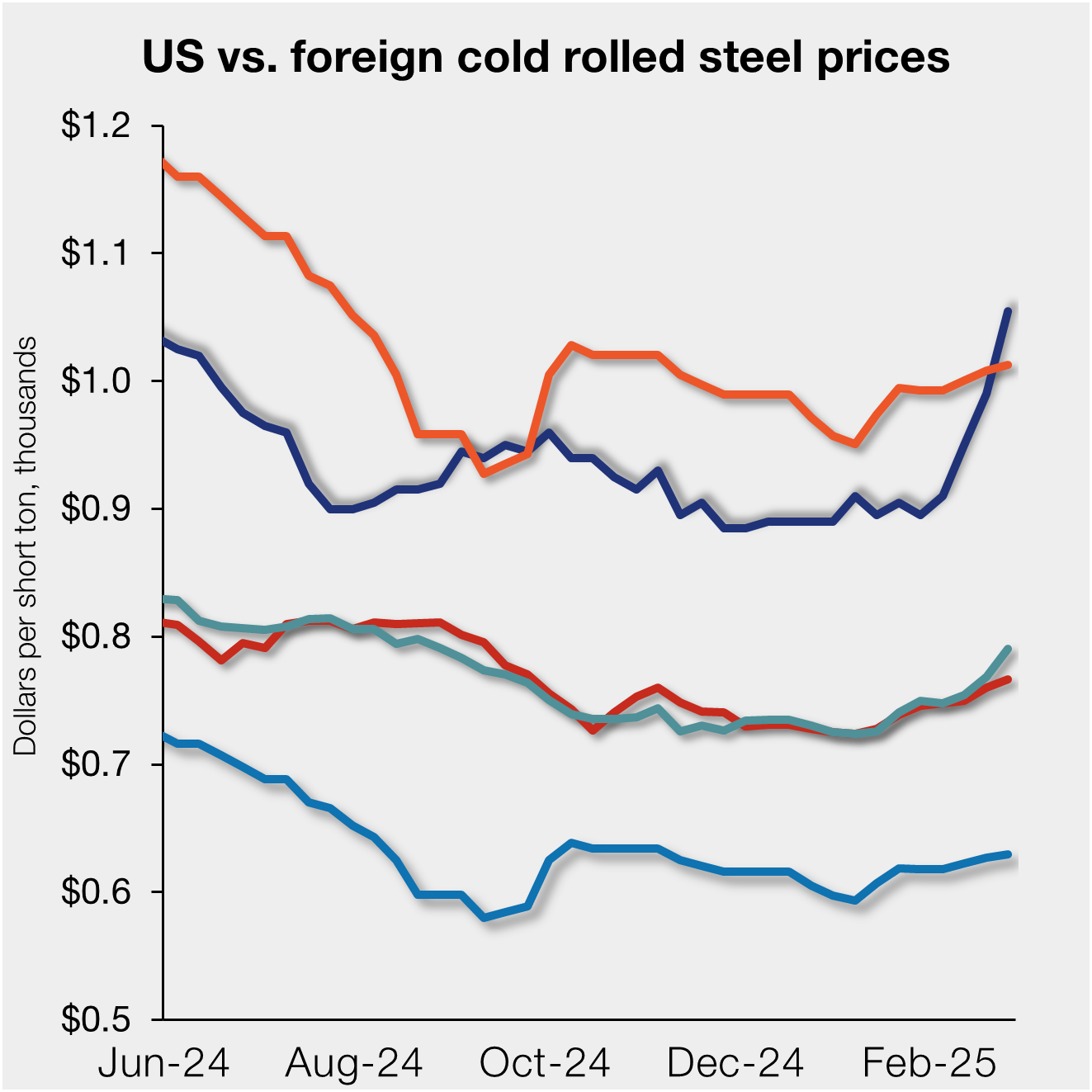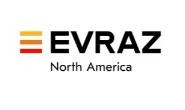Steel Products Prices North America

Anti-Dumping Cases Threatened, Now What?
Written by David Phelps
April 1, 2014
Steel Market Update has been well aware, and has reported on, the prospect of new trade cases being levied by the U.S. steel industry against imports of cold rolled and coated (galvanized & Galvalume) steels. There have been suggestions that the dumping suits could be filed within the month. So, we wanted to get the opinion of David Phelps, one of our contributing writers and the former president of the American Institute for International Steel (AIIS). Here is his report:
Recently there has been a lot of speculation regarding the filing of more anti-dumping and countervailing duty suits by the domestic steel industry. I will try to make some sense of the situation, principally from the perspective of the folks who have to pay for this trip into the protectionist world of steel anti-dumping — consumers and importers.
First, a note to start this discussion. Consumers (or distributors) who purchase imports pay anti-dumping duties — directly if they are importers or indirectly if they buy from the importer of record. Under the law they have no say legally in the anti-dumping case. The impact on your company is irrelevant to the processing of the dumping case. Imagine that! The taxpayer has no say in whether taxes are levied, or if they are, how much they will be. Such is the US’s anti-dumping law, manipulated by the domestic steel industry for decades. And, by the way, the US is the only developed country that does not allow the public interest to be considered in such cases. In fact, most, if not all, developing countries also take into consideration such things.
So, the basics go something like this.
- In a normal year, the US is short of steel made in the US – both in terms of total tons and, of course, the many kinds of steel that are not available from domestic producers either in sufficient quantity or not at all. Steel imports are needed to keep our industrial base working.
- As a result, in order to attract imports from international suppliers, steel prices in the US are generally above international prices 9 out of 10 years. Once the price differential reaches a level that covers the additional costs associated with international transactions, import deals get done.
- Rising US steel prices create an import window, but of course, when prices increase sufficiently to create the import opportunity, it will take some months – 2, 3 or up to 5 – for the import order to arrive in the US. Therefore, during this time, the domestic mills get the full benefit of the price increases.
- During the wait, domestic mills will increase shipments to the market if they can. When the increased imports begin to arrive – like in early 2014 – the addition to the supply could soften pricing unless increases in demand keep pace with the additional supply.
- Should the market soften due to the increase in domestic shipments and imports, the predictable result is that the domestic industry will begin its caterwauling about imports, claiming injury, and threatening trade cases. This is where we are today — especially on flat rolled products.
As to why would the domestic steel industry go through its own process and file cases? Pardon – or rather don’t pardon – the cynicism, but simply put, because they can. They can impact the marketplace significantly by using the trade laws that they have spent decades and millions of dollars manipulating inside the Congress and, of course, inside the Department of Commerce in regulation writing.
So, as a steel buyer what does all this mean? First, threats do not necessarily mean dumping cases will be filed. For example, the domestic industry constantly threatened to file on OCTG for several years before they actually filed the case. The delay was due to the simple fact that the domestic industry was far too profitable on OCTG – especially the seamless producers — even with high levels of imports. The general view of why threats are made is that the threat to file might unnerve some importers who would reduce import purchases. As we know, the Koreans called their bluff on OCTG. Whether the domestic industry’s current financial situation for the flat rolled products in question warrants new trade cases is an unknown at this point.
Steel buyers decisions’ on whether to buy imports should not be affected at this stage based on threats. The case needs to be filed to become a threat. Once the case is filed, the legal process kicks in and it is predictable – at least in its own way.
The issue at hand is the suspension of liquidation, which is an arcane Customs term that means that the entry is not finished, that as of a specific date the importer of record is liable for any anti-dumping duty that might be found. Once that date is fixed at the preliminary DOC margin announcement, trade in the subject product is very risky. That date generally hits some 160 days after the filing but can be later or as early as 70 days for dumping cases. That 70 day date almost never is confirmed at the end of the year-long process, but an importer who entered product a day after suspension of liquidation has to post a cash deposit equal to the anti-dumping rate found and then wait to see which side wins the case. If the domestics win, the government keeps the money – assuming it is the right amount – and if the importers win, he gets his money back.
If you buy imported steel and your supplier is named in the case, you are not alone, the domestic industry has sued every major international steel producer in the world over the years – except Switzerland and Ireland.
David Phelps
Read more from David PhelpsLatest in Steel Products Prices North America

Nucor slows HRC price climb with $5/ton increase
After eight weeks of double-digit price increases on hot-rolled (HR) coil, Nucor slowed the price rise this week with an increase of $5 per short ton.

Domestic CRC prices surge ahead of imports
The price spread between stateside-produced CR and imports reached its widest margin in over a year.

Evraz raises plate prices $160/ton
Evraz North America (NA) has followed Nucor and SSAB with a plate price increase of its own: up $160 per short ton (st). The increase was effective immediately for all new orders of carbon, high-strength low-alloy, and normalized and quenched-and-tempered plate products, as well as for hot-rolled coil, the steelmaker said in a letter to […]

Nucor lifts HR coil to $820/ton
Nucor has increased its consumer spot price (CSP) for hot-rolled (HR) coil for a fourth consecutive week.

Nucor pushes HR spot price to $790/ton
Nucor increased its consumer spot price (CSP) for hot-rolled (HR) coil to $790 per short ton (st) on Monday, Feb. 10 – a $15/st bump vs. last week. The Charlotte, N.C.-based company has raised its weekly CSP by $40/st over the past three weeks after maintaining tags at $750/st since Nov. 12, according to SMU’s […]
